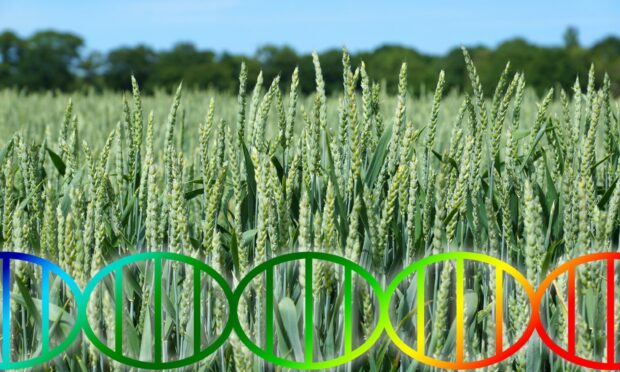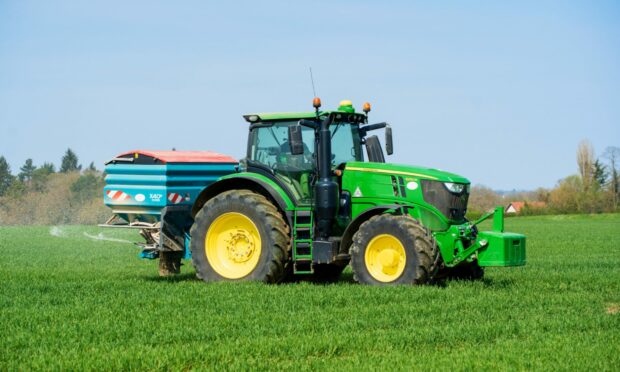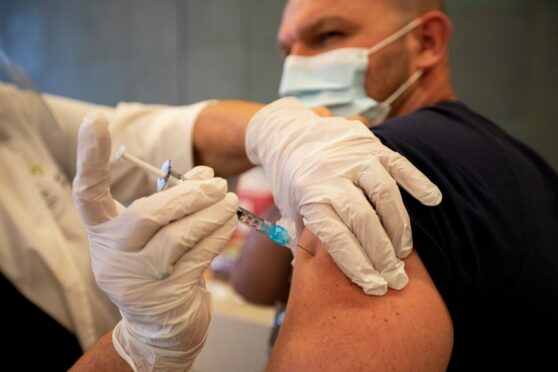During the referendum Boris Johnson promised that one of the great benefits of Brexit would be a bonfire of burdensome EU regulations holding our industries back.
A year since we officially left the EU, he has little to show that promise is being delivered.
For food exporters the opposite has been the case.
New border controls have loaded extra bureaucracy and costs on to companies exporting food to Europe and for many small producers the costs have become so prohibitive, they have given up exporting.
However, last week the UK Government announced a relaxation of the rules allowing field trials of gene edited crops and while it is no bonfire it is at least a small step in the right direction.
Revolution
After the Second World War with food rationing stalking the land, my father’s generation experienced the first green revolution in agriculture which transformed our ability to produce food.
The development of chemical fertilisers, pesticides, and widespread use of lime in the 1950s led to massive increases in yields and enabled farmers to provide cheap wholesome food for everyone.
At Drumachloy farm on the Isle of Bute, where I was born and brought up, my father farmed 200 acres of poor quality wet land under what would be described today as an organic system of agriculture.
The farm struggled to carry 35 dairy cows.
However, when my father started using nitrogen, phosphate, and potash in the late 1950s grass yields soared, the herd doubled to 70 and doubled again to 140 milk cows when my brother and I took over in the 1980s.
Disapproval
At the time I remember old Ian McAlister of Mid Ascog Farm shaking his head in disapproval and predicting these new-fangled chemical fertilisers would burn the land out within 10 years.
Instead, within a few years his nephew took over the farm and swiftly brought in the modern methods of farming.
The chemical revolution brought food rationing to an end and produced plentiful food at ever lower prices for my father’s generation.
Those modern food systems delivered remarkable increases in yields over the years giving farmers the ability to feed a growing world population that doubled to six billion over the next 60 years.
Golden days
Today many of our politicians denigrate and blame our current intensive systems of agriculture for destroying the planet and claim turning the clock back to the golden days of organic food production is the answer.
They would do well to remember that before the chemical revolution in food production a family would have to spend 40% of their income on food compared to just over 15% today and real hunger was never far away for the poorest in society.
There can be no doubt that our current system of agriculture has been hugely successful in delivering plentiful cheap food for a growing population. However, it is no longer fit for purpose.
It needs radical change if it is to meet the massive challenge of net zero and feeding another three billion mouths by 2050.
Technology
We need another green revolution, and many experts believe new gene editing technology is one of the key tools, that will help deliver that goal.
Gene editing allows breeders to dramatically speed up the breeding of new seed varieties that can fight off pests, insects, and disease and reduce farmers’ reliance on pesticides.
The technology opens the possibility of breeding plants that are resistant to drought, need less fertiliser and provide higher yields.
In the livestock sector the technology has the potential to swiftly develop new vaccines and new treatments for animal diseases.
The ability of this technology to transform lives can be in no doubt as the miracle of Covid vaccines which we are all plunging into our arms has shown.
The Covid vaccines took only 12 months to develop and gene editing made that incredible feat possible.
Sustainable
The US is backing this technology to make their agriculture more sustainable and more productive.
They have given the green light to regulate gene edited plants in the same way as conventionally bred plants.
That is a common sense approach as it is impossible to distinguish between plants bred conventionally or bred using gene editing.
The EU is considering whether to allow gene editing to be used in plant breeding but with its highly politicised and torturous decision-making, it is anybody’s guess how long it will take to pass a new law permitting its use.
The UK Government’s decision to back the technology is recognition that innovation and new techniques are essential if UK agriculture is to deliver on its net zero targets.
Limbo
However, Scottish farmers and the James Hutton Institute, who are leaders in this technology, have been left in limbo as the Scottish Government refuses to back its use.
At the recent Oxford conference, farm ministers from Wales, Northern Ireland, and the UK turned up and set out their plans for the future of their agriculture sector.
Scotland was represented by an empty chair.
Says it all.
George Lyon is a consultant with communications company, Hume Brophy.


